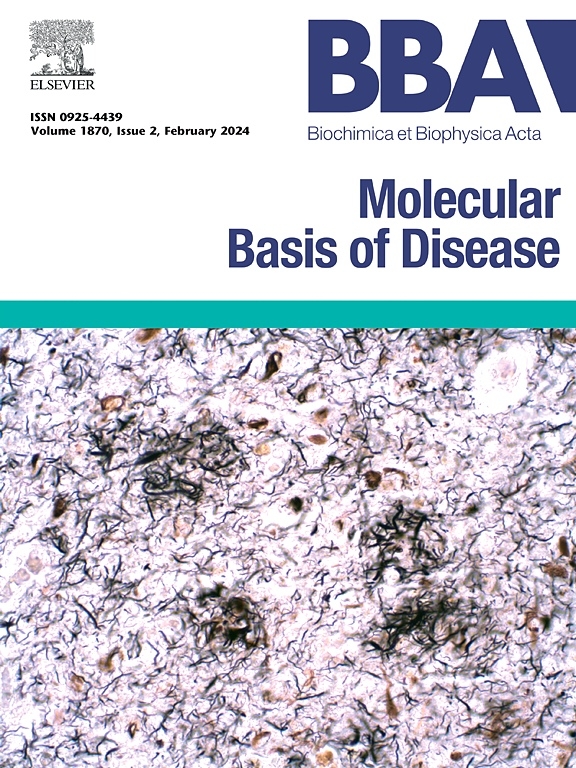Molecular mechanism of mitochondrial autophagy mediating impaired energy metabolism leading to osteoporosis
IF 4.2
2区 生物学
Q2 BIOCHEMISTRY & MOLECULAR BIOLOGY
Biochimica et biophysica acta. Molecular basis of disease
Pub Date : 2025-01-20
DOI:10.1016/j.bbadis.2025.167685
引用次数: 0
Abstract
Osteoporosis (OP) is a bone metabolic disease caused by decreased bone mass leading to destruction of bone microstructure. Treatment of OP is characterized by a lifelong nature, causing extreme financial and psychological burdens to patients. Hormonal abnormalities, cellular autophagy, Ferroptosis, and oxidative stress are all part of the intricate and varied pathophysiology of OP. Recent research has revealed that mitochondrial dysfunction is a significant factor in the onset and progression of OP. By regulating bone marrow mesenchymal stem cell differentiation through various signaling pathways and cytokines, abnormal mitochondrial energy metabolism brought on by oxidative stress processes impacts osteoblast and osteoclast proliferation and differentiation, causing an imbalance in bone metabolism that ultimately results in OP. Therefore, one possible method to prevent and manage OP may be to use mitochondria as a carrier to trigger osteogenic differentiation of bone marrow mesenchymal stem cells from mitochondrial energy consumption, oxidative stress, autophagy, and osteoclast death. In order to offer some theoretical references and therapeutic approaches for the clinical prevention and treatment of OP, we will examine the pathophysiology of OP from mitochondrial dysfunction in this work.

求助全文
约1分钟内获得全文
求助全文
来源期刊
CiteScore
12.30
自引率
0.00%
发文量
218
审稿时长
32 days
期刊介绍:
BBA Molecular Basis of Disease addresses the biochemistry and molecular genetics of disease processes and models of human disease. This journal covers aspects of aging, cancer, metabolic-, neurological-, and immunological-based disease. Manuscripts focused on using animal models to elucidate biochemical and mechanistic insight in each of these conditions, are particularly encouraged. Manuscripts should emphasize the underlying mechanisms of disease pathways and provide novel contributions to the understanding and/or treatment of these disorders. Highly descriptive and method development submissions may be declined without full review. The submission of uninvited reviews to BBA - Molecular Basis of Disease is strongly discouraged, and any such uninvited review should be accompanied by a coverletter outlining the compelling reasons why the review should be considered.

 求助内容:
求助内容: 应助结果提醒方式:
应助结果提醒方式:


